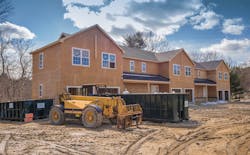A severe shortage of homes for sale has caused prices to surge for the last several years, driving up competition among buyers and leading to offers well over asking amid a fast run-up in mortgage rates. According to Realtor.com, the U.S. housing market is short between 2.3 million and 6.5 million units, a deficit caused by more than a decade of under-building.
New construction fell 80% peak to trough during the Great Recession from the third quarter of 2005 to the first quarter of 2009. Getting back on track after such a major slowdown has proven to be more difficult than expected, particularly in the face of new challenges such as the COVID-19 pandemic, which sent the cost of new construction 30% to 40% higher than it was pre-pandemic.
“If the population is going to grow and the pace of homebuilding is insufficient for that growth, then there’s going to be a housing shortage,” says Robert Dietz, chief economist of the NAHB. “You’d have to be building more than 1.1 million homes a year to meaningfully reduce the deficit.”
Today, says Dietz, the industry is suffering from a lack of construction labor, a lack of available lots, a lack of lumber and building materials, a lack of lending to builders and developers, and local laws and zoning requirements adding to the costs builders incur.
About a quarter of the final price of a new home is regulatory costs, says Dietz. Plus, higher interest rates means it costs builders more to borrow money for land development and construction.
